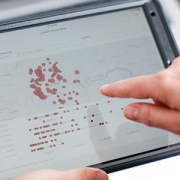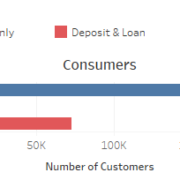Creating Smart Data
If you and your team are spending time trying to wrangle all your various data feeds to find a way to create opportunities for your organization — there is a way to streamline your efforts. You don’t need to find a home for, and a way to use all your data — just the “smart data”.
The flow of data is picking up speed for all marketers, and astute leaders are turning this data into better, more targeted and relevant sales and marketing efforts. But managing all the data from web platforms, marketing technology, mobile devices and the “Internet of Things” is often a daunting and time-consuming task. Rather than focusing on managing the big data flow, we think marketers should try to discover the relatively few data points that can really drive revenue – find your smart data and put it to work!
Start with Customer Segments
The simplest way to begin data-driven messaging to customers and prospects is by understanding that different segments may purchase your products for different reasons or in different ways. For the B2C client we find that demographics or lifestyle factors drive differences in product usage, and for the B2B client – different industry verticals, or other firmographic data mean different likelihoods to buy products and services. Are you able to accurately identify these customer segments and analyze the differences in how they purchase or use your products and services?
Find Your Customers’ Trigger Point
Often times your customers will take some specific actions before they buy – or before they say good-bye (for example, checking their balance before paying off their car loan). These actions should be seen as prompts that can be used to trigger communications to make the sale happen faster, or keep a customer longer. Using predictive models can score your customers and prospects for their likely purchase propensity – but the model itself can identify the behavior triggers that can be turned into automated messaging programs.
Build an Engagement Score
Measure how engaged your customers are with your brand by creating a score that will combine interactions across channels (email, satisfaction, service calls or visits to the store). Keeping it simple with a High-Medium-Low engagement scoring process, you can easily tell if some customers just need more love!
Add “Data Transformations” to Your Data Clean Up
When you combine data from multiple sources you might receive basically the same fields from the different data sources – although they may have different names and slightly different values. For example, “current age” is not as easy to update as “year of birth,” and may actually be the most useful data element for use in marketing campaigns. Build common rules, definitions and data naming conventions so the data can be easily understood, and used efficiently in marketing, sales and operations. Data Transformations are key to making your data smart and actionable.











